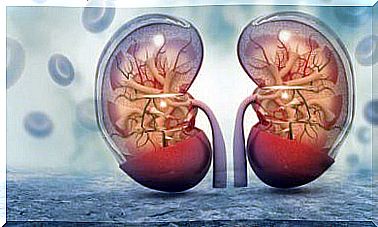Vitamin D Deficiency In Children: A Growing Problem?
Research on vitamin D has had a growing role lately ; in particular, associated with the study of diseases that, in addition to their own alterations, are accompanied by a vitamin D deficiency in children.
Being a growing problem, it requires the search of a considerable number of investigations. However, what seems to be clear is that the subject attracts a lot of attention, but is, at the same time, a source of controversy. Specialists cannot agree on when to request vitamin D tests and when to supplement, if necessary.
What do we call vitamin D deficiency?
A lack of the amount of vitamin D required to be healthy is called a vitamin D deficiency. In this sense, vitamin D plays an important role in the body: in the nervous, muscular and immune systems, among others.
Likewise, vitamin D helps the body absorb calcium, which is, at the same time, an essential component of bones. Therefore, vitamin D prevents osteopenia, which sometimes occurs in premature babies, according to data from the US National Library of Health.

Sources of vitamin D
In order to avoid vitamin D deficiency in children, it is important to know some of its sources of obtaining it. In this sense, vitamin D can come from different sources:
- Through the skin.
- With diet and supplements.
Although the body produces vitamin D naturally after exposure to sunlight, the problem is that excessive exposure and at inappropriate times can lead to aging of the skin and skin cancer.
Vitamin D deficiency and fear of rickets
As this information from the American Academy of Pediatrics points out, “Rickets is a condition that occurs when bones become soft in growing children. It happens when the bones cannot absorb enough calcium and phosphorus to make healthy and strong bones. Although there are genetic and metabolic causes for rickets, the most common is a deficiency of vitamin D and is also known as nutritional rickets.
Thus, rickets is a common disease in developing or underdeveloped countries. It is characterized by growth retardation and is accompanied by deformed bones. It usually occurs in children between 6 months and 3 years old, as it is the stage in which they grow the fastest.
In this sense, from this scientific society, they also warn that babies who are breastfed and who do not consume additional vitamin D are at the highest risk. This risk is even greater if the child’s mother is also deficient in vitamin D.

Too much vitamin D: a problem to consider
According to information from the same page of the US National Library of Medicine that we mentioned earlier, getting too much vitamin D can also be harmful to the body. This is known as vitamin D toxicity.
Thus, the signs of vitamin D toxicity, as this study published in the Pharmacological Bulletin points out , include, among others:
- Nausea.
- Vomiting
- Lack of appetite.
- Constipation.
- Weakness.
- Weight loss.
So too much vitamin D can also damage the kidneys. Too much of this vitamin also raises the level of calcium in the blood. High levels of calcium in the blood, called hypercalcemia, can cause confusion, disorientation, and heart rhythm problems.
In parallel, researchers from the Drug and Therapeutics Committee, Lawson Wilkins Pediatric Endocrine Society establish that it is necessary to review our knowledge about the sources of vitamin D, both from natural sources, and from those that are not. Likewise, it is necessary to know the mechanisms by which the synthesis and ingestion of this vitamin can be optimized.
As for the vitamin D deficiency in children …
It is very important to meet the demand for vitamin D needs measured in international units. For this, it is essential not to resort to self-administration, but to professional advice and guidance.
Likewise, it is necessary to bear in mind that not meeting the needs of vitamin D can be as harmful as doing it in excess. Therefore, it is important to find the right balance between safe sunbathing and getting adequate amounts of vitamin D.
We hope that this information on vitamin D deficiency has helped you to increase your knowledge on this topic. However, if you have any doubts that may arise in this regard, it is always advisable to consult a health professional to provide an adequate diagnosis and treatment, if necessary.









